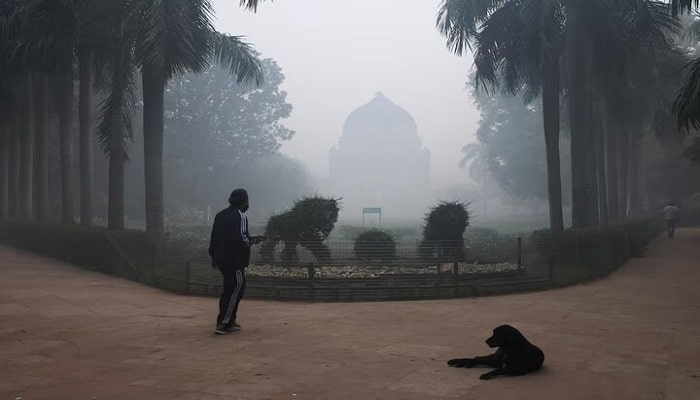PNN – The air quality in the Indian capital New Delhi reached hazardous levels today (Tuesday), recording the highest levels of pollution in the world, according to a report by Swiss company IQAir.
According to the report of Pakistan News Network, citing Reuters, Air quality in the Indian capital reached hazardous levels on Tuesday, the highest in the world, according to Swiss company IQAir, a day after the country celebrated Diwali, the festival of lights.
The Supreme Court of India last week relaxed a ban on the use of firecrackers and fireworks in the city, allowing the use of “green crackers” for a maximum of three hours on Sundays and Mondays. However, according to eyewitnesses, these firecrackers were also used outside the permitted times. The emissions from these firecrackers are 30 to 50 percent lower than regular fireworks.
Read more:
According to IQWire, New Delhi’s air quality index reached 442, making it the most polluted major city in the world. The concentration of particulate matter in the city was more than 59 times the World Health Organization’s annual guideline.
PM 2.5 refers to particulate matter with a diameter of 2.5 microns or less that can penetrate the lungs and increase the risk of fatal diseases and heart problems.
India’s Central Pollution Control Board (CPCB) has also rated New Delhi’s air quality as “very poor”.
According to the Ministry of Earth Sciences, Delhi is unlikely to recover from this situation in the coming days, and the air quality is expected to remain in the “very poor to poor” category with an AQI index between 201 and 400.
The Indian capital and its surrounding areas are subject to thick smog every winter as the cold, heavy air traps construction dust, vehicle exhaust and smoke from agricultural fires, leaving many of the city’s 20 million residents with respiratory illnesses.
In the past, New Delhi authorities have closed schools, halted some construction activities, and imposed restrictions on the use of private vehicles to deal with the problem.
India is not the only Asian country struggling with toxic air. In Pakistan’s Punjab province, which borders India, the local government has implemented an “emergency plan” to combat pollution.

